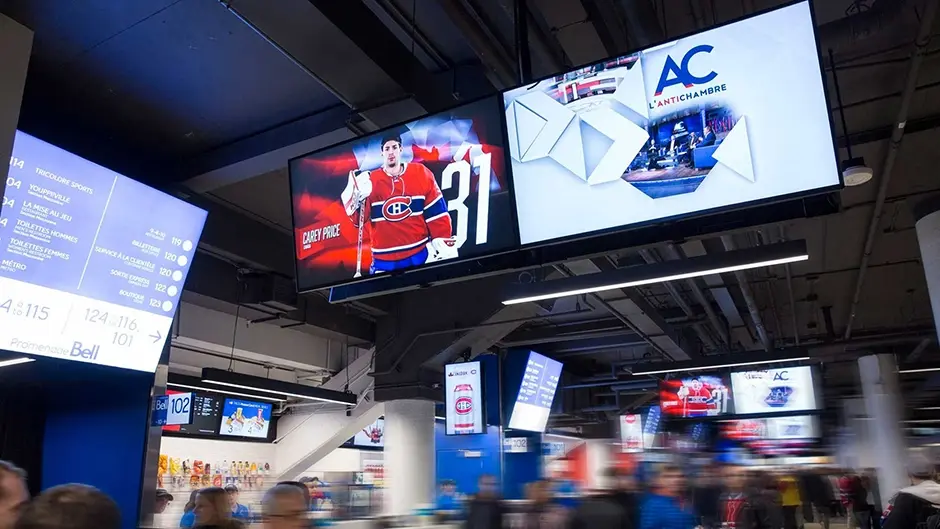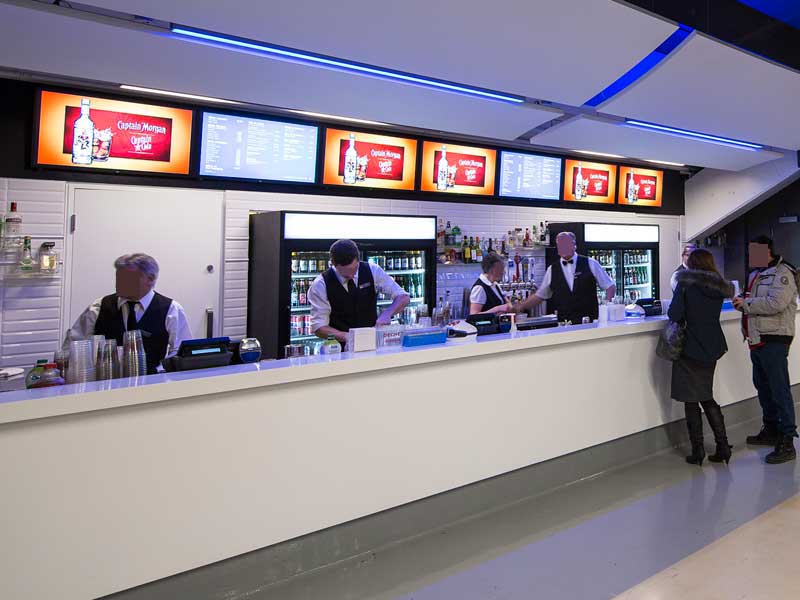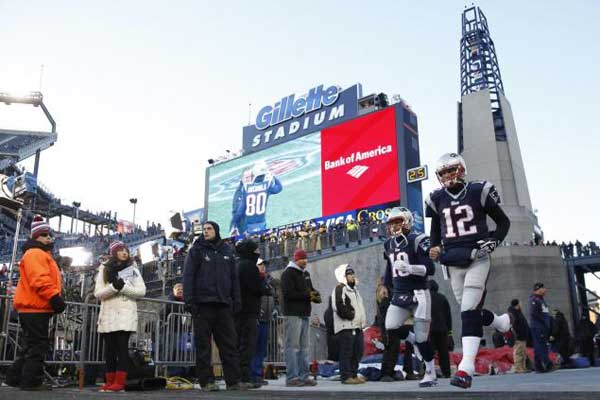Stadium & Arena
Transform Your Stadium into a Dynamic Retail Environment

Stadiums have evolved beyond sports and entertainment venues to become multifaceted retail environments. Modern stadiums require solutions that cater to diverse needs, from advertising networks and quick-service restaurants (QSR) to corporate communications and sponsorships. Navori digital signage software offers a comprehensive, multidisciplinary approach to meet these demands.
Enhance Your Stadium and Arena’s Fan Experience and Revenue
Navori digital signage solutions help stadiums and arenas leverage screens to showcase live-action replays, wayfinding, emergency information, and sponsor advertising during breaks.
Addressing the Needs and Challenges of Modern Stadiums
Digital signage is a vital tool for modern stadiums, addressing the diverse needs of both spectators and event organizers. From providing real-time information to enhancing the overall fan experience, digital signage offers numerous possibilities. However, implementing digital signage in stadiums also presents challenges like technical issues and content mismanagement. Understanding and addressing these challenges is crucial to fully harnessing the potential of digital signage solutions.
Stadiums Evolving Beyond IPTV
The need for modern stadiums has shifted significantly. While IPTV was once the primary focus, today’s stadiums are becoming retail environments that require comprehensive, multidisciplinary solutions. Navori digital signage software meets these needs by integrating advertising networks, programmatic DooH, QSR displays, corporate communications, and sponsorship opportunities into a single, cohesive platform. This holistic approach ensures that every aspect of the stadium’s operations is optimized, providing a superior experience for fans and stakeholders alike.

Before switching to Navori, we were running 7 different CMS platforms. Basically we had a seperate software for every type of display experience we can in the stadium. Finding a single software platform that can handle all of our use cases has been a game changer!
— Stan Biksma, Arena Comms Lead
The Winning Play: Navori Digital Signage
Centralized Management
Navori’s digital signage software allows for centralized control, streamlining the management of multiple screens across the stadium. This ensures uniform content delivery, creating a seamless and immersive experience for spectators.
Modern Aesthetics
Beyond functionality, Navori solutions enhance the stadium’s appearance, creating an engaging atmosphere that captivates spectators and reflects the venue’s innovative spirit.
Programmatic Ad Space Sales
Leverage programmatic ad exchanges to unlock new revenue streams. Navori software empowers stadiums to monetize ad spaces efficiently, connecting with advertisers and delivering targeted content to the audience.
Organized and Informed Back-Office Staff
Navori software helps back-office staff stay organized and informed, ensuring smooth coordination and seamless operations in a fast-paced stadium environment.
Versatile Screen Support
Navori software supports all player and screen types, from large LED displays to interactive kiosks, providing the flexibility to implement a diverse range of displays tailored to unique stadium requirements.

Real-Life Use Cases for Stadium Digital Signage
Promote Upcoming Events
Use Navori’s digital signage to boost ticket sales by promoting future events with visually appealing content.
Efficient Wayfinding
Deploy directional signage to help spectators quickly find their seats, reducing confusion and enhancing satisfaction.
Exterior LED Displays
Enhance exterior facades with ultra-large LED displays, creating an immersive visual experience for passersby.
Interactive Kiosks
Foster fan engagement with interactive kiosks that provide entertainment and information, enhancing the overall event experience.
Emergency Notifications
Ensure safety by using Navori software to display emergency notices and evacuation alerts on digital signage screens throughout the stadium.
In Conclusion
Navori’s digital signage solutions transform stadiums and arenas, addressing their evolving needs. From enhancing fan experiences to streamlining operations and unlocking new revenue opportunities, Navori’s commitment to innovation makes it the top choice for stadium digital signage.